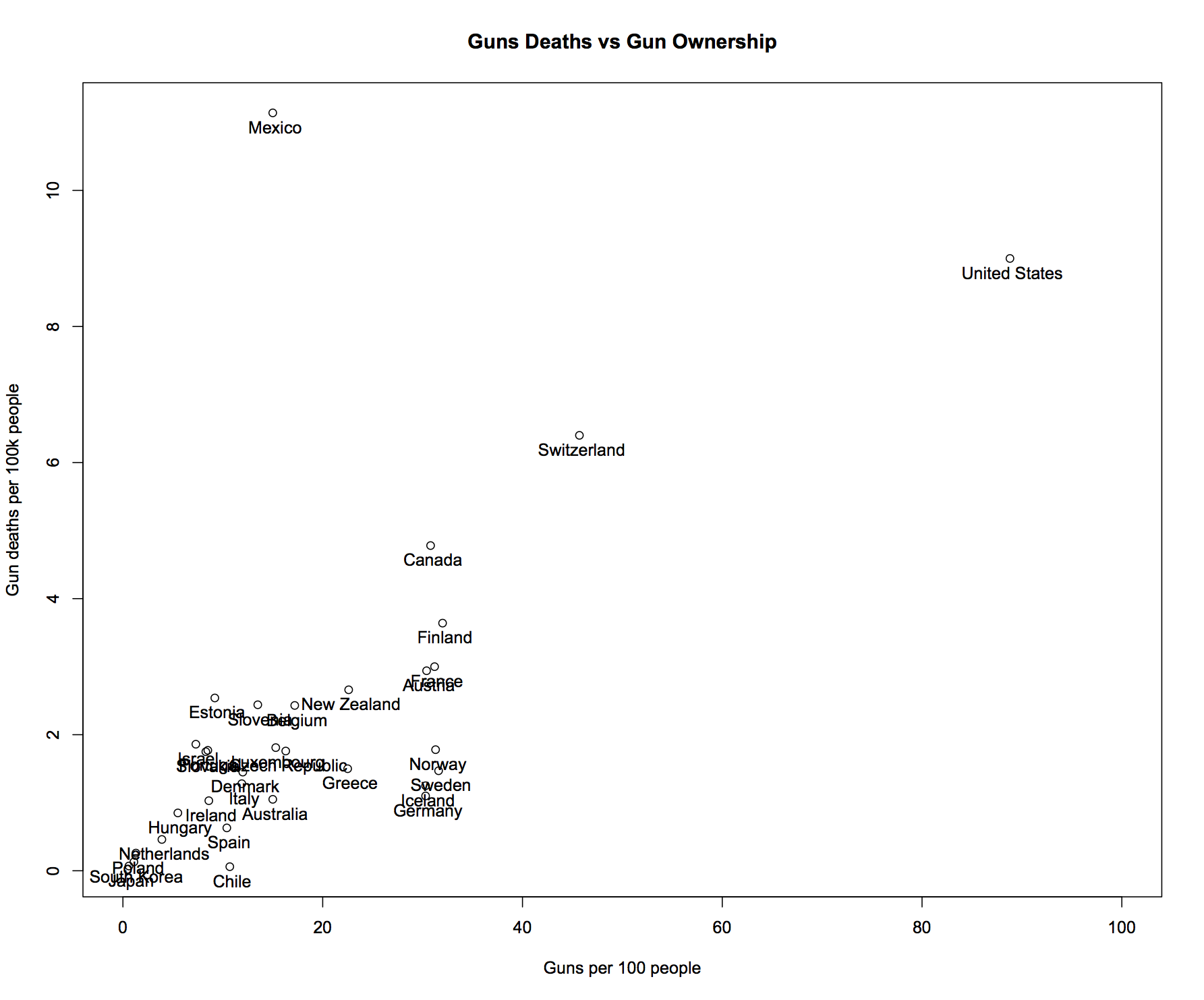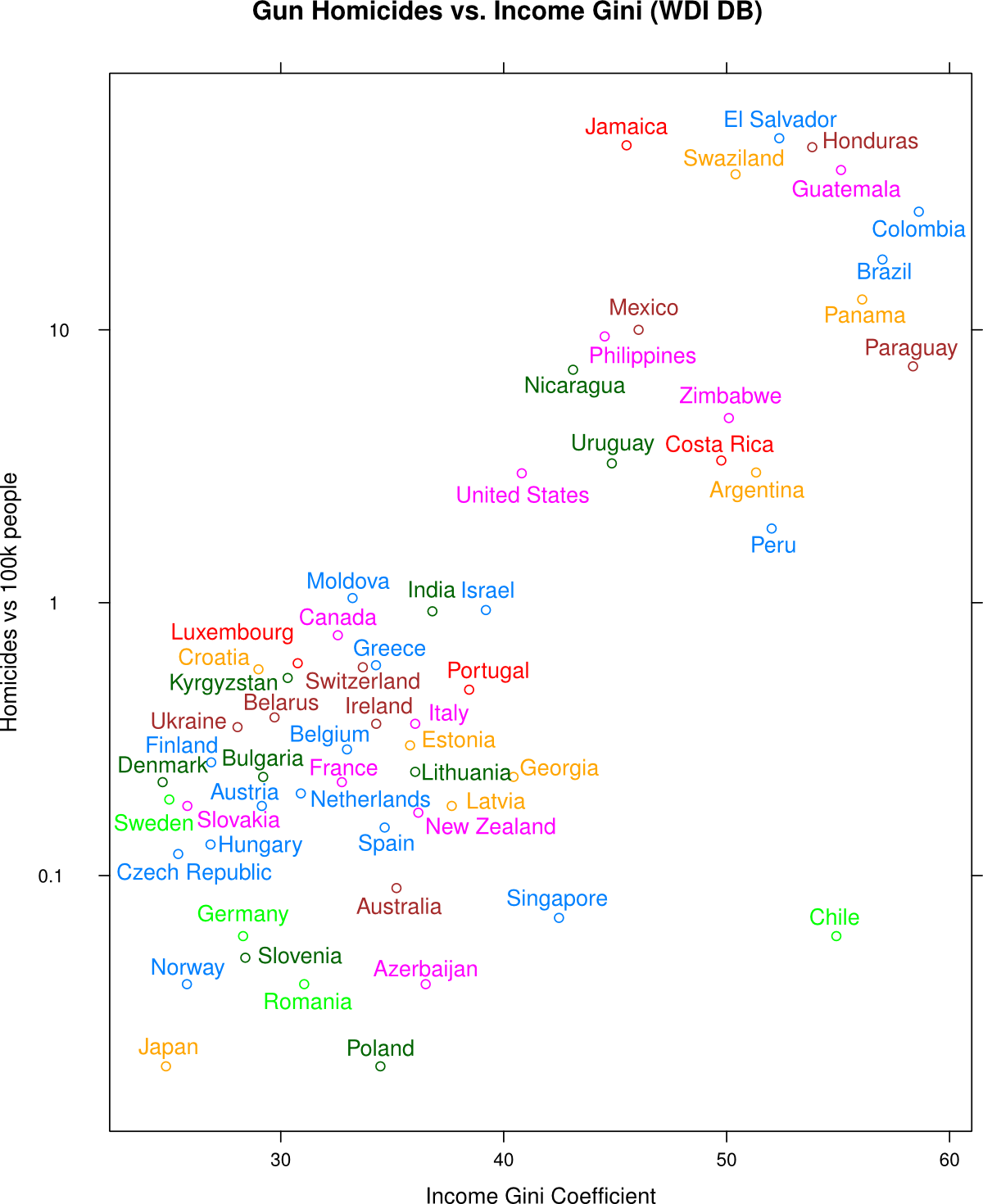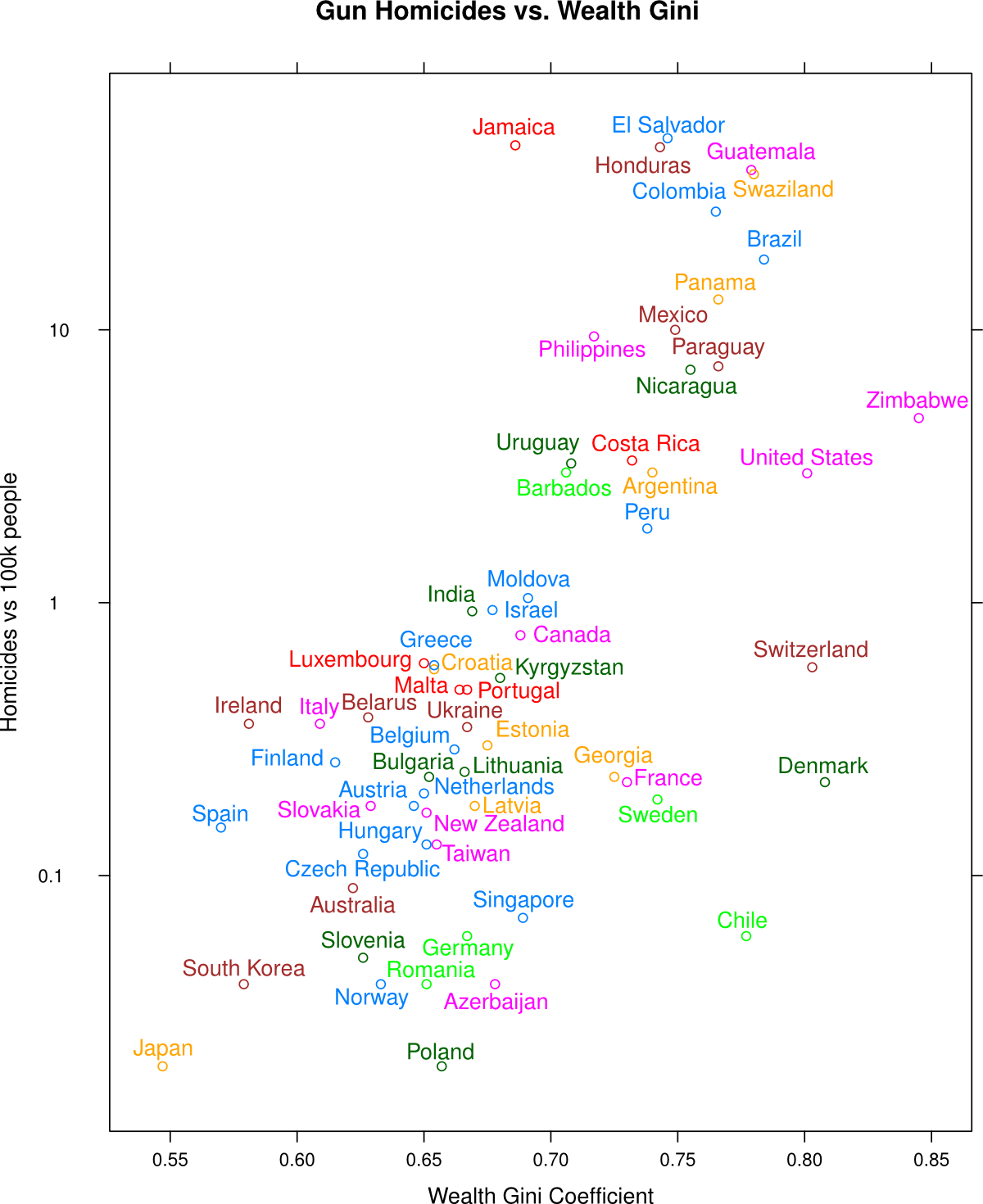Inspired by Mark Reid’s post illustrating the bimodal relationship between the density of guns in a population and the number of gun homicides, I’ve created a slightly different plot from the same data, designed to illustrate a slightly… muddier relationship. This is an expanded variant of homicides vs guns, all countries, but scaling firearm homicides by log(10) shows the relationships between low-homicide countries.
library(directlabels)
library(lattice)
guns <- read.table("guns/data/guns.csv", sep="\t", header=TRUE)
deaths <- read.table("guns/data/deaths.csv", sep="\t", header=TRUE)
oecd <- read.table("guns/data/oecd.csv", sep="\t", header=TRUE)
data <- merge(guns, deaths, by="Country")
data$OECD <- data$Country %in% oecd$Country
plot(
direct.label(
xyplot(Homicides ~ Guns, data,
group=Country,
main="Homicides vs. Guns",
xlab="Guns per 100 people",
ylab="Homicides vs 100k people",
scales=list(y = list(log = 10))),
"top.points"))

Awkward question #1: what the hell are we supposed to make of the United States? Awkward question #2: why are there two clusters with vague correlations in opposite directions? Awkward question #3: Where’s Africa? Well that one’s easy–we don’t have reliable crime statistics for many African nations. But still, what the hell is going on here?
I think we’ve got a tendency to get excited about the linearity in graphs like this:

… when most of that linearity is actually an effect of gun suicide. Panel analysis of Australia’s National Firearms Agreement–probably the largest and most consistently executed gun buyback we have data for–suggests that reducing the prevalence of firearms (primarily long guns; handguns were already tightly regulated) dramatically reduced firearm suicides in Australia. This makes good sense; when guns are less available, fewer people who want to commit suicide will use them. But what about homicide? Would reducing the prevalence of guns help us prevent killings?
Unfortunately the NFA evidence is, well, weak. There is a statistically significant effect in the panel x timeseries data suggesting the buyback reduced firearm homicide–but the error bars on those figures are extremely large and include nonzero possibilities of negative deaths. I don’t find their post-hoc error adjustment particularly convincing, but I’m also not a professional statistician. At the end of the day, it comes down to sample size. Australia had less than 300 firearm homicides in five years! It’s quite difficult to find a statistically significant effect on a dataset that small.
It’s also tricky to identify how much of the reduction is due specifically to a change in gun dynamics after the buyback, since non-firearm homicides and non-firearm suicides also dropped dramatically following the NFA. Was the drop in crime primarily a consequence of, say, macroeconomic factors reducing the drive for violence? Or was it principally due to lower firearm prevalence? I’ve read quite a few papers trying to apply PCA or ANOVA to state or country-level data or perform timeseries analysis before and after legislation, and, well… most of the results around homicide seem mixed. There are a few policy interventions that seem to have significant positive effects, but in general this is a tough problem with many confounding variables. The NFA paper has a great background introduction to the problem, if you’re curious.
While you ponder that, and just why Latin American nations with low GDP per capita seem to suffer much higher rates of firearm homicides than social-democratic European nations with more guns per capita, consider that we have a better predictor of gun homicide than prevalence:


This is nothing new: we know economic inequality correlates strongly with all types of crime. There are plausible causal links both ways. Lack of access to basic goods causes some violent crime, and violence hinders the development of stable income channels for families and businesses by diverting or destroying human capital and property. Income inequality is negatively correlated with access to education, social services, progressive tax structures, social mobility, unionization, life expectancy, physical and mental health, social cohesion… there’s a complex web of relationships here, and I don’t have the statistical wherewithal (or datasets, for that matter) to give a more specific account.
What you can tell from these graphs is that prevalence isn’t the whole story. The lack of a strong global correlation between gun prevalence and homicides means it’s not just “lots of guns” causing violent crime. Why does Brazil show almost ten times more violence than Argentina, with comparable gun prevalence? Socioeconomic conditions play a role as well.
A nice ante up from @mbusigin’s original. Maybe I will play too if I finish what I’m working on in time.